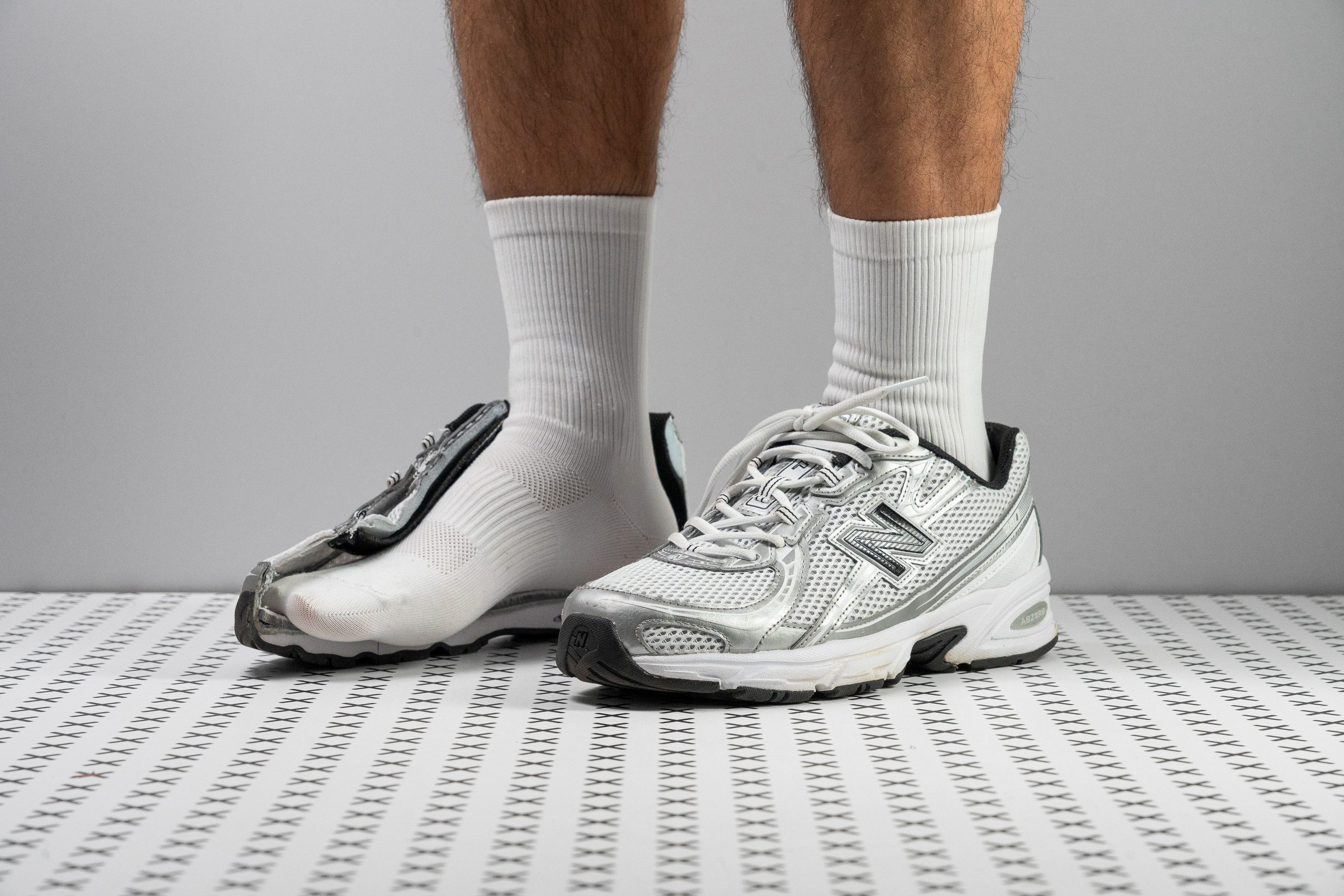Our verdict
Pros
- Great value for money
- Lighter than average
- Impressive durability
- Great impact protection
- Decent lateral stability
- Flexible and forgiving
- Reliable grip for urban surfaces
- True-to-size fit
Cons
- Not as breathable as expected
- Not a cushy one
Audience verdict
- Top 13% most popular trainers
Comparison
The most similar trainers compared
+ + Add a shoe | |||||
|---|---|---|---|---|---|
| Audience score | 88 Good! | 89 Good! | 94 Superb! | 90 Good! | |
| Price | £100 | £130 | £140 | £95 | |
| Style | DadRetroSporty | ClassicDadRetroSporty | ClassicDadRetroSporty | DadRetroSporty | |
| Shock absorption | Moderate | High | High | Moderate | |
| Energy return | Moderate | Moderate | Low | Moderate | |
| Traction | Moderate | High | High | Moderate | |
| Breathability | Moderate | Warm | Breathable | Warm | |
| Weight lab | 11.3 oz / 319g | 13.5 oz / 383g | 14.1 oz / 401g | 12.8 oz / 364g | |
| Size | True to size | True to size | True to size | True to size | |
| Midsole softness | Firm | Firm | Firm | Firm | |
| Material | Mesh | MeshSuede | Mesh | MeshSuede | |
| Season | SpringFall | SpringFall | SpringFall | SpringFall | |
| Inspired from | Running | Running | Running | Running | |
| Width / fit | Medium | Medium | Medium | Medium | |
| Toebox width | Medium | Medium | Medium | Medium | |
| Leather/suede quality | Fake leather | Real suede | Real suede | Real suede | |
| Toebox durability | Good | Decent | Decent | Good | |
| Heel padding durability | Decent | Decent | Bad | Good | |
| Outsole durability | Decent | Good | Good | Good | |
| Heel stack lab | 31.7 mm | 35.4 mm | 37.1 mm | 27.7 mm | |
| Stiffness | Flexible | Stiff | Moderate | Flexible | |
| Tongue padding | Average | Average | Average | Average | |
| Drop lab | 10.2 mm | 11.1 mm | 11.5 mm | 9.9 mm | |
| Forefoot | 21.5 mm | 24.3 mm | 25.6 mm | 17.8 mm | |
| Removable insole | ✓ | ✓ | ✓ | ✓ | |
| Heel tab | None | None | Extended heel collar | None | |
| Torsional rigidity | Moderate | Moderate | Moderate | Moderate | |
| Heel counter stiffness | Flexible | Moderate | Flexible | Stiff | |
| Reflective elements | ✗ | ✓ | ✓ | ✗ | |
| Closure | Laces | Laces | Laces | Laces | |
| Top | Low top | Low top | Low top | Low top | |
| Ranking | #101 Bottom 16% | #84 Bottom 30% | #21 Top 18% | #65 Bottom 46% | |
| Popularity | #15 Top 13% | #10 Top 9% | #19 Top 16% | #69 Bottom 42% |
Who should buy
The New Balance 740 is hard to ignore if:
- you want a throwback 2000s running shoe vibe
- you are looking for a more affordable dad shoe from New Balance
- you prefer lightweight and flexible kicks
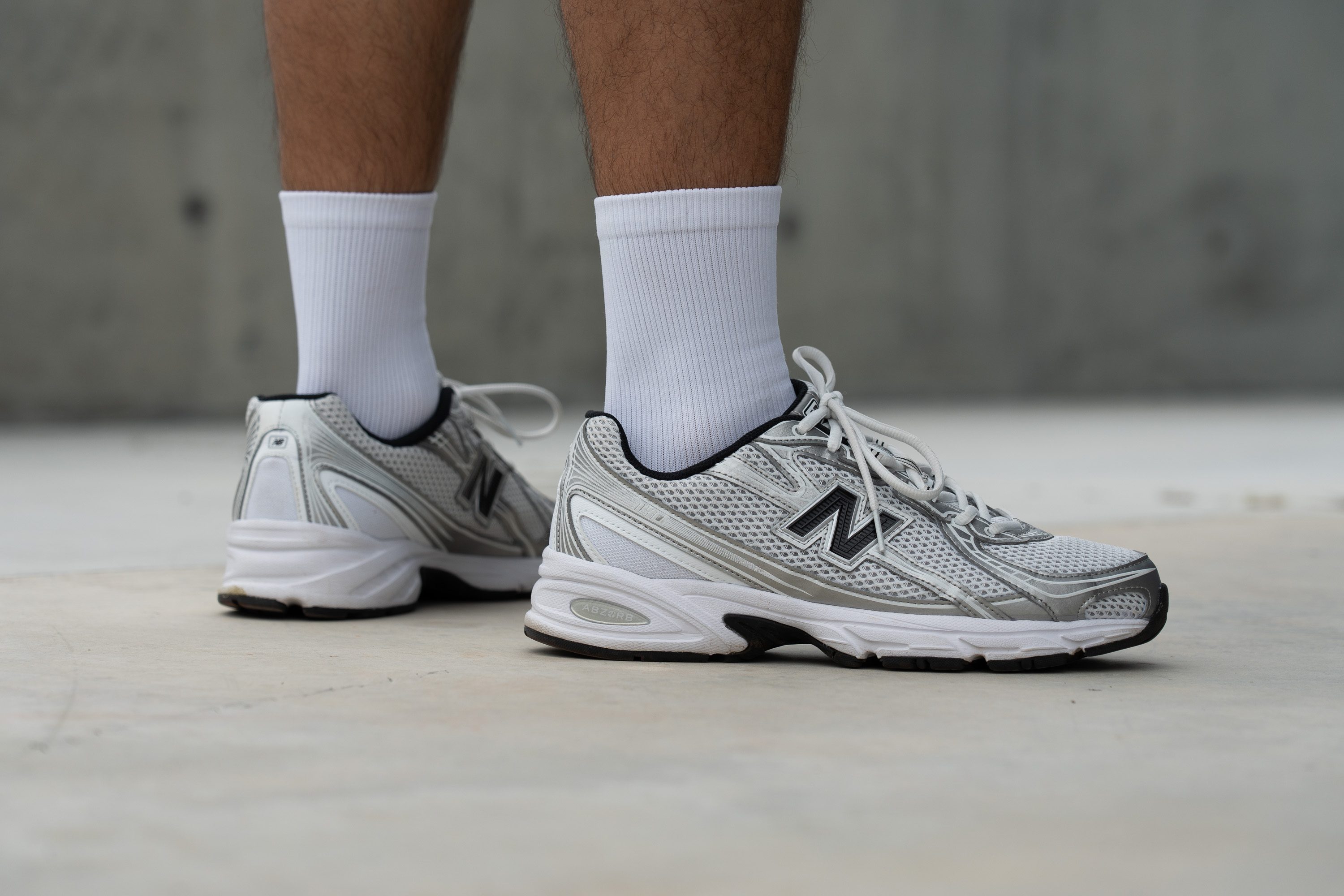
Who should NOT buy
Its open cell mesh can make you think that the NB 740 is a highly breathable kick for summer but our lab tests showed the opposite. If you want a very well aerated retro shoe, trye the Nike V2K Run or the Nike P-6000.
Another reason to look away is if you have flat feet with a moderate or even severe overpronation. You will find more arch support and stability in a shoe like the ASICS Gel Kayano 14.
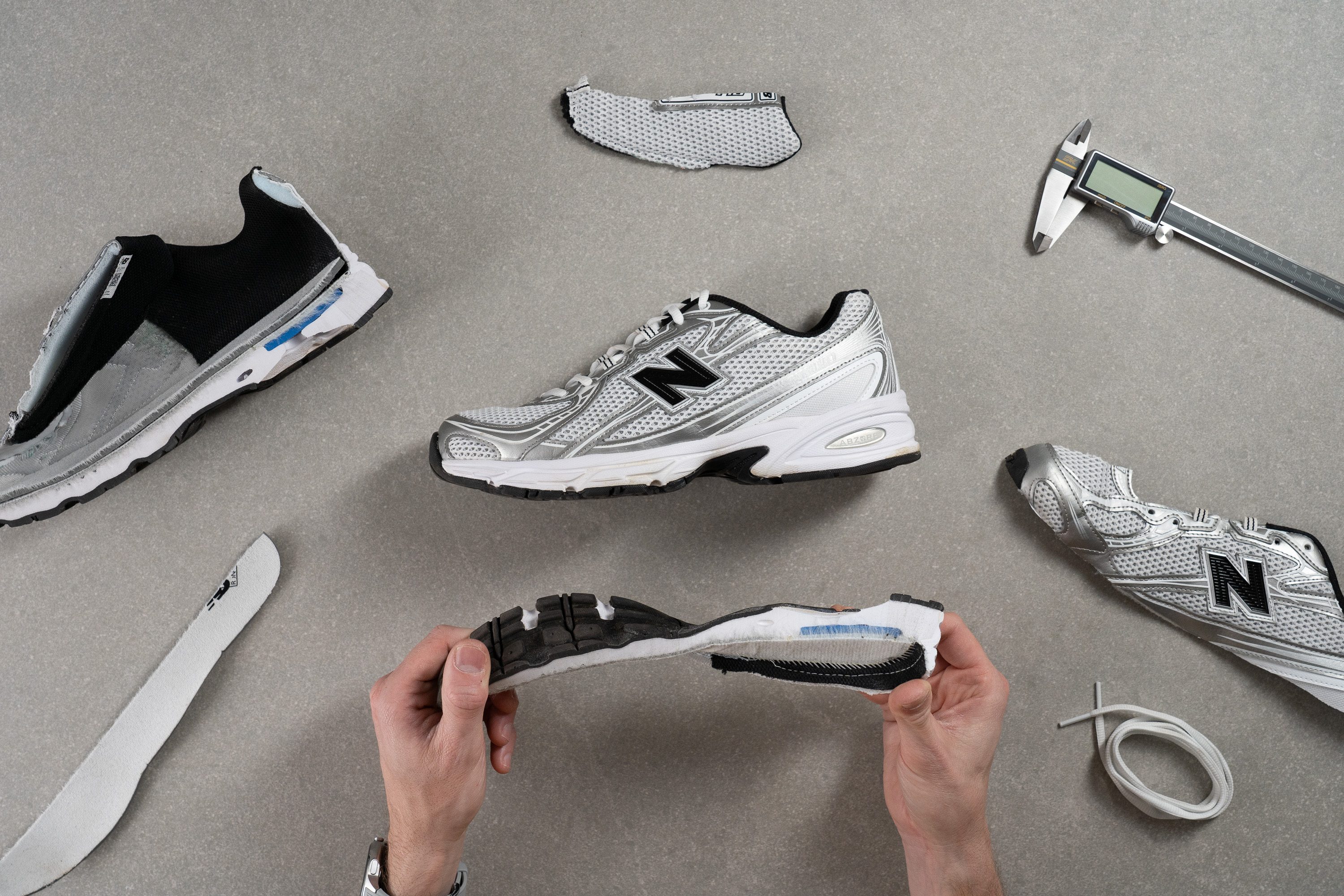
Cushioning
Shock absorption
Enhanced by the ABZORB technology in the heel, we found the NB 740's impact protection to be solid for all-day wear.
The shoe's shock absorption clocked in at 103 SA, which is notably higher than the category average. This means that some of the ground force is attenuated by the shoe's midsole, reducing the stress on your feet and legs, especially on hard concrete.
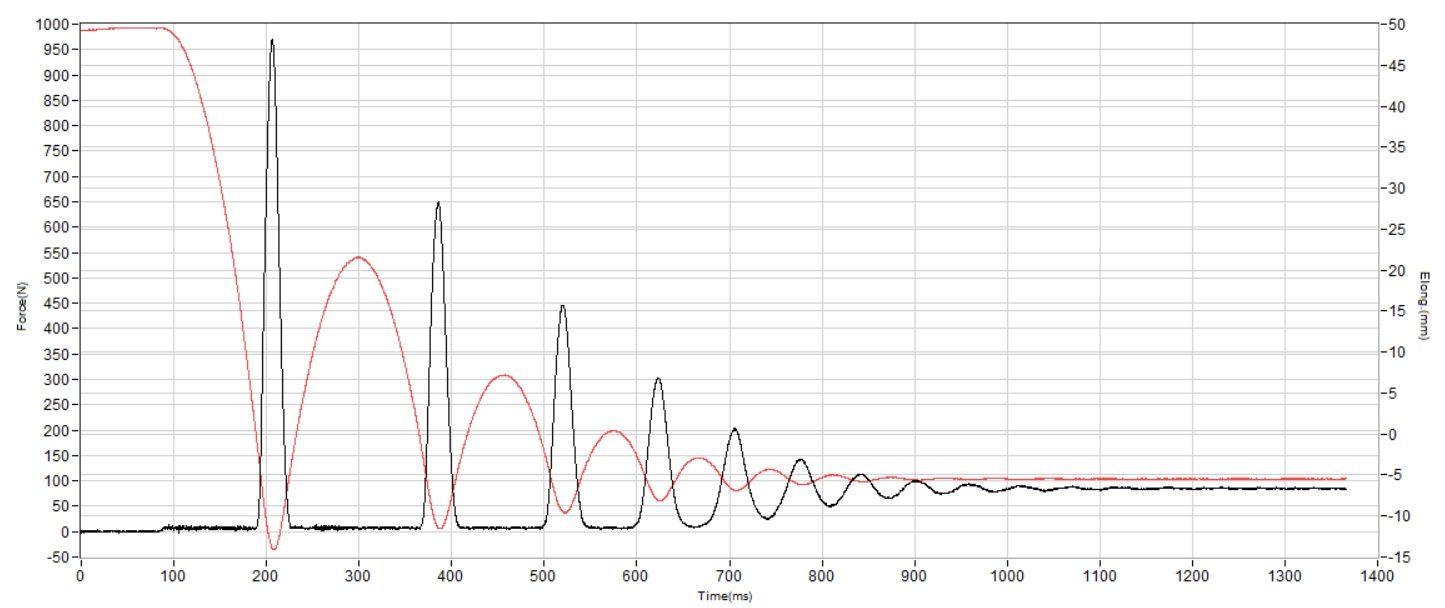
| 740 | 103 SA |
| Average | 89 SA |
Energy return
However, you won't experience much rebound in the 740 as its energy return showed just a moderate reading of 52%.
While its ride is not very springy, it doesn't feel dead either and offers a very stable and reliable platform instead.
| 740 | 51.9% |
| Average | 50.2% |
Heel stack
Wear testing the NB 740 instantly revealed its generous platform and our calliper measurements only confirmed it.
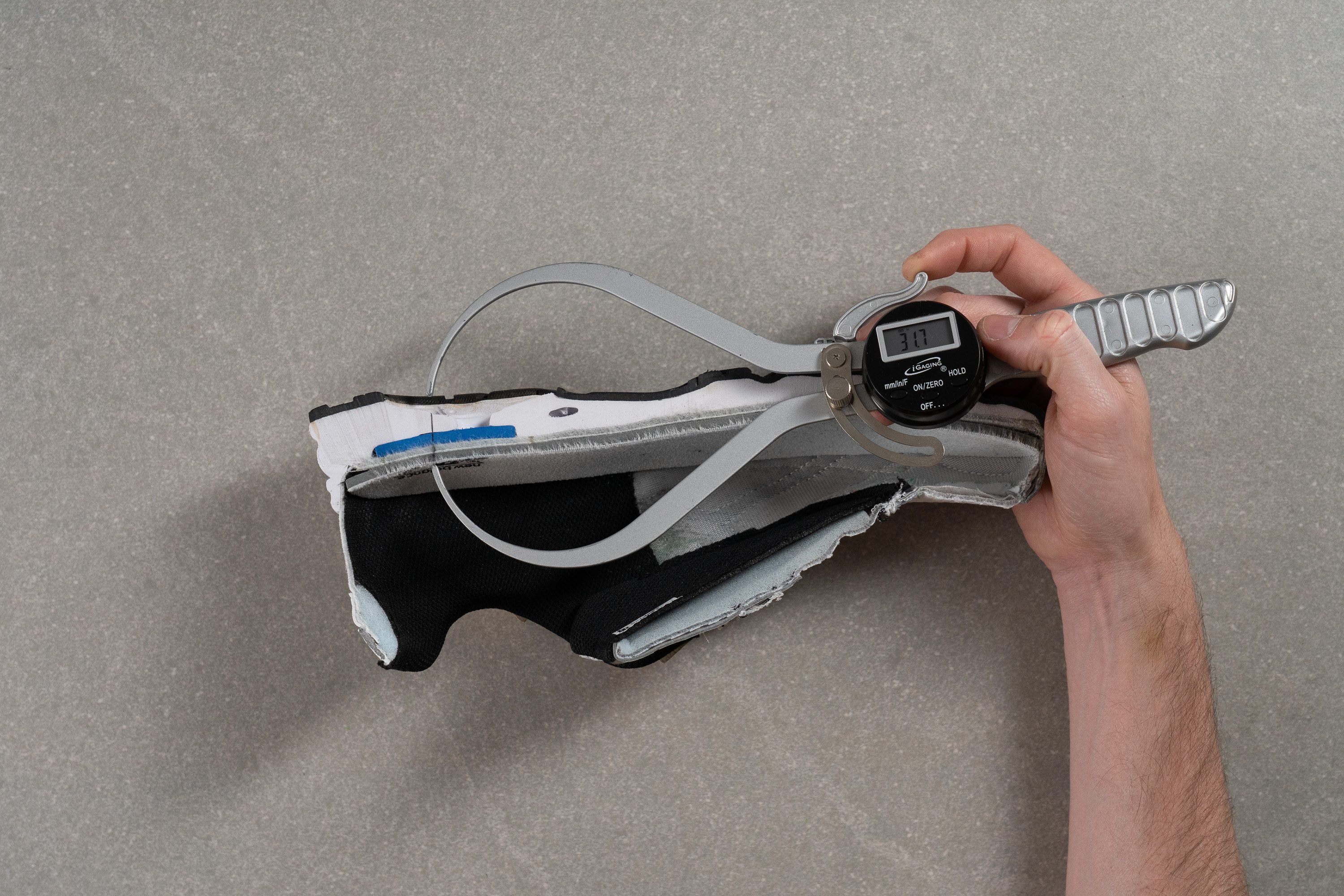
Checking the shoe's stack height in the heel returned 31.7 mm which is on the taller side of lifestyle trainers but is on par with most other New Balance kicks. In other words, there is enough underfoot material to mute out the impact of all-day wear.
| 740 | 31.7 mm |
| Average | 30.7 mm |
Forefoot stack
The shoe's forefoot stack also turned out to be slightly above-average at 21.5 mm. Its thickness complemented the taller heel and kept the balls of our feet and the toe joints safely buffered from the hard ground.
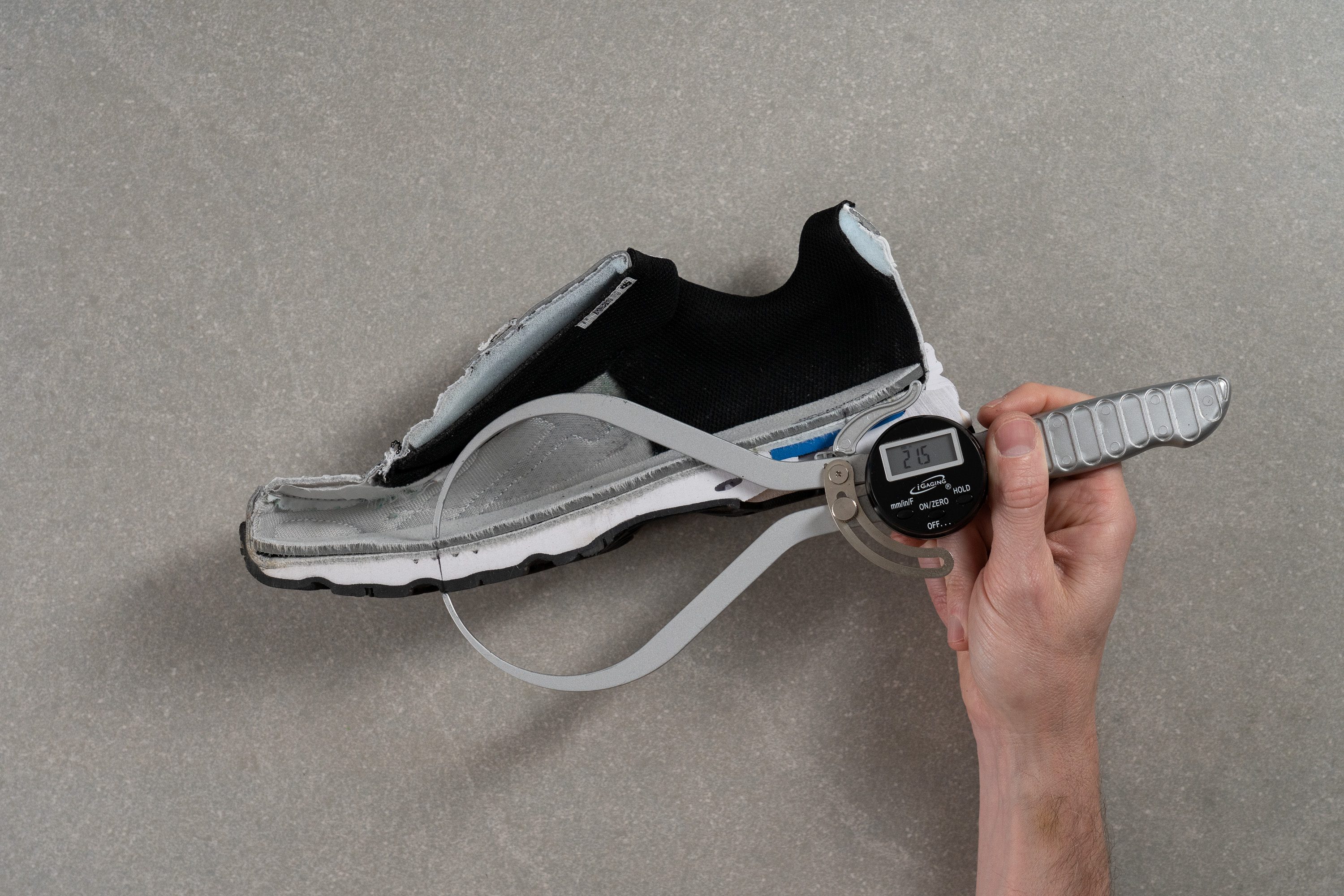
| 740 | 21.5 mm |
| Average | 19.5 mm |
Drop
The difference between the two stack heights comes in at 10.2 mm which is a standard offset for most casual trainers.
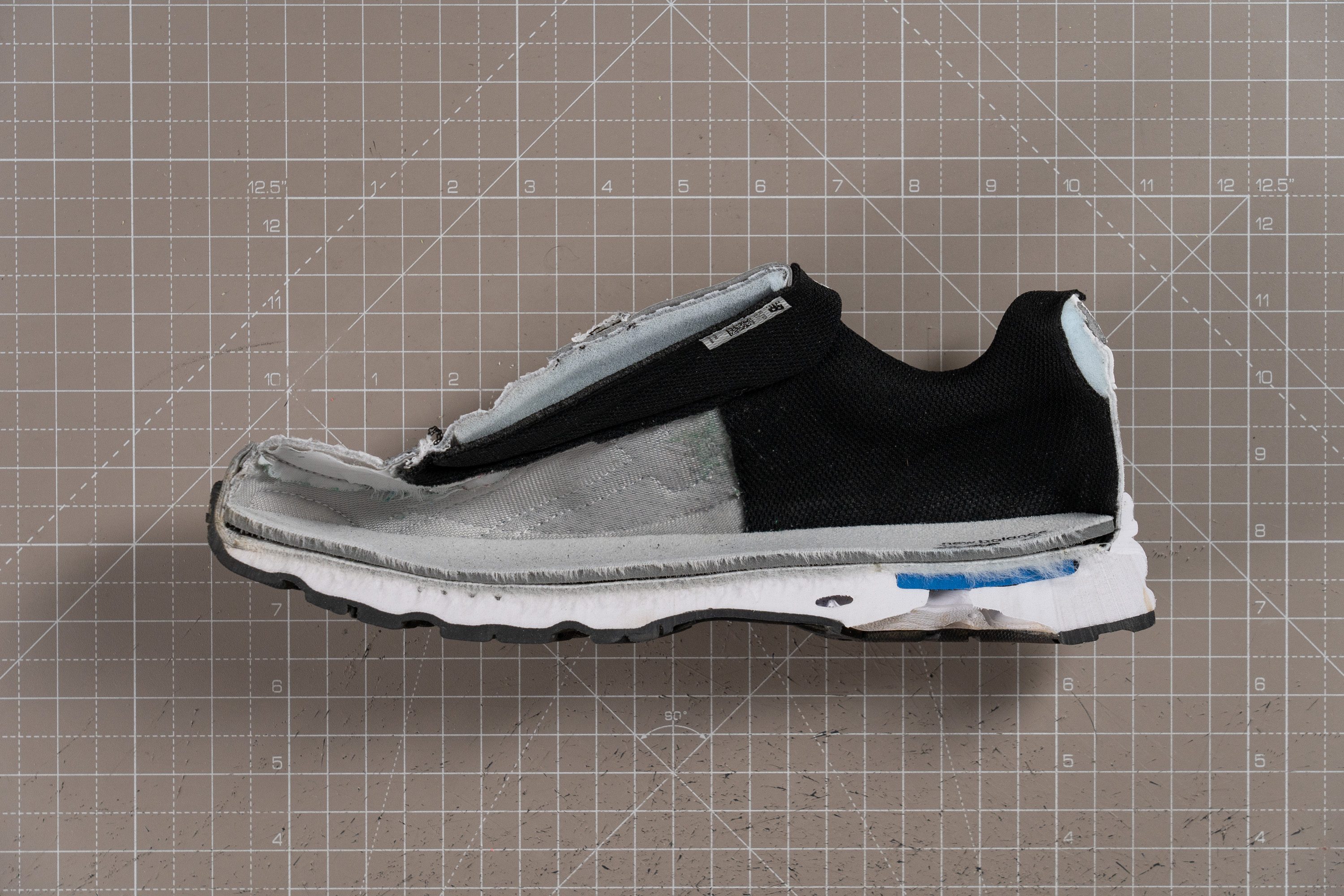
That way, the heel is slightly elevated above the toes, taking the pressure off the Achilles and the foot tendons and making the 740 quite supportive for prolonged walks.
| 740 | 10.2 mm |
| Average | 11.2 mm |
Midsole softness
But please note that a thicker midsole doesn't necessarily mean a cushier ride. The foam that makes up most of the shoe's sole is pretty firm and we've got a durometer measurement to confirm this.
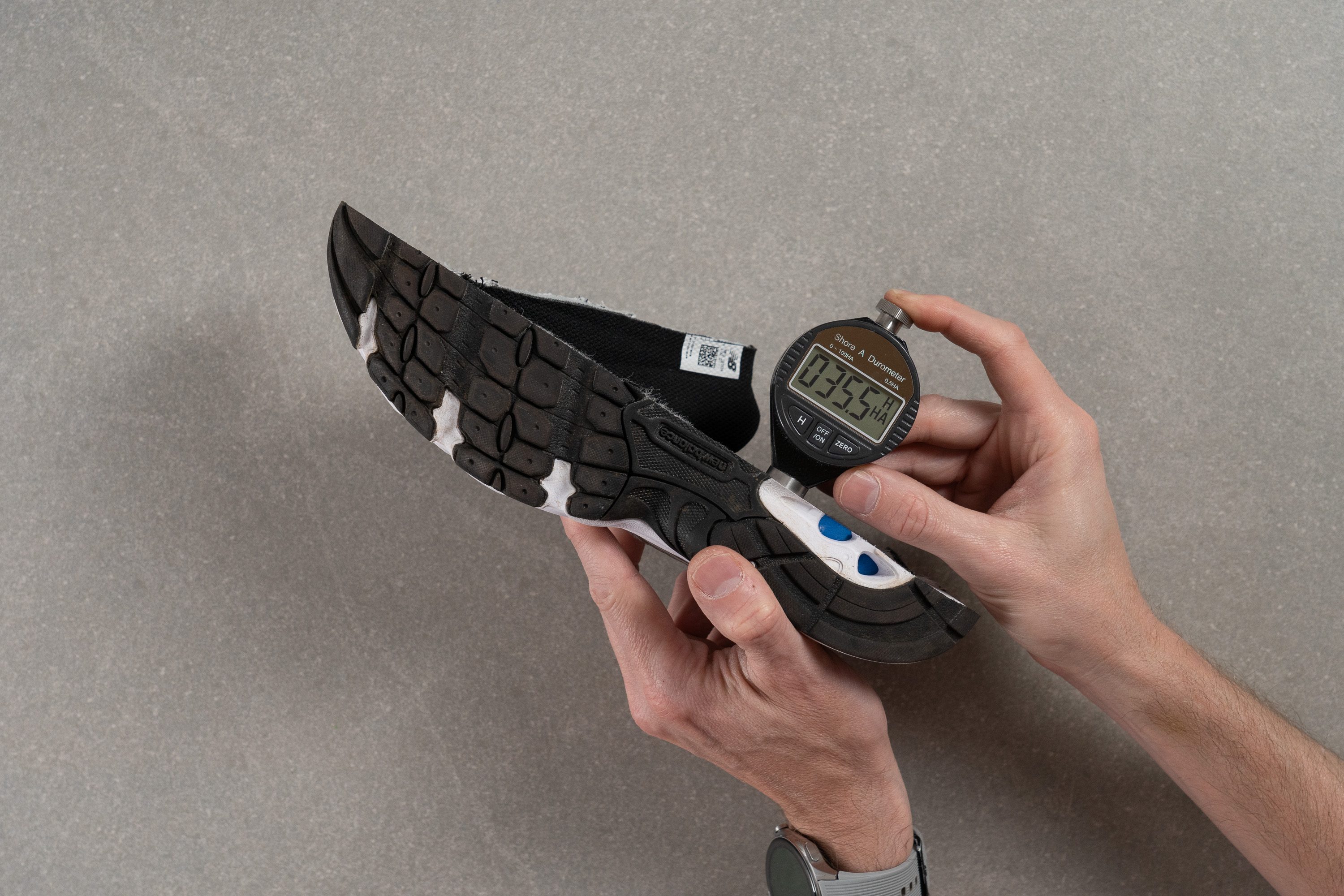
At 35.5 HA, it is notably firmer than the average cushioning blend. There is not much give unless you apply a lot of pressure to it.
| 740 | 35.5 HA |
| Average | 28.6 HA |
Secondary foam softness
But how about the ABZORB foam in the heel? Does it add any softness?
As our durometer measurement showed, there is hardly any difference in terms of density. With an equally high reading of 36.5 HA, the blue foam is just as firm.
But to be fair, New Balance's product description doesn't promise any plushness either. On the contrary, it claims "a combination of cushioning and compression resistance" in the NB 740.
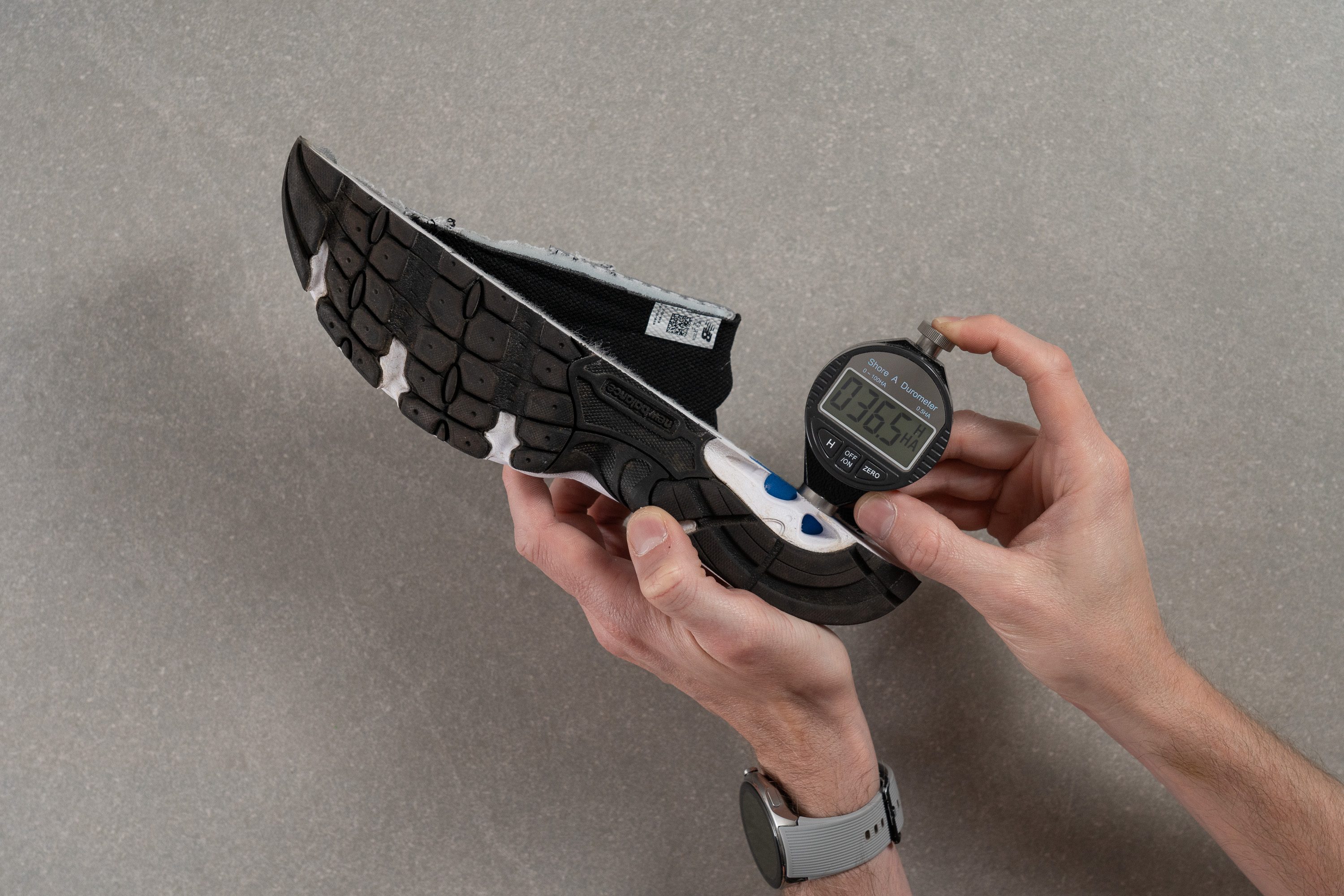
| 740 | 36.5 HA |
| Average | 31.5 HA |
Size and fit
Size
New Balance 740 fits true to size (70 votes).
Width / Fit
Having created a gel mould of the New Balance 740, we knew it would be a well-fitting kick just by looking at its shape.
Our digital calliper confirmed these observations with a solid medium reading of 94.2 mm in the widest part. This falls right into the medium-width range of casual trainers.
However, if you have wider feet, please note that the NB 740 is only available in a standard D width.
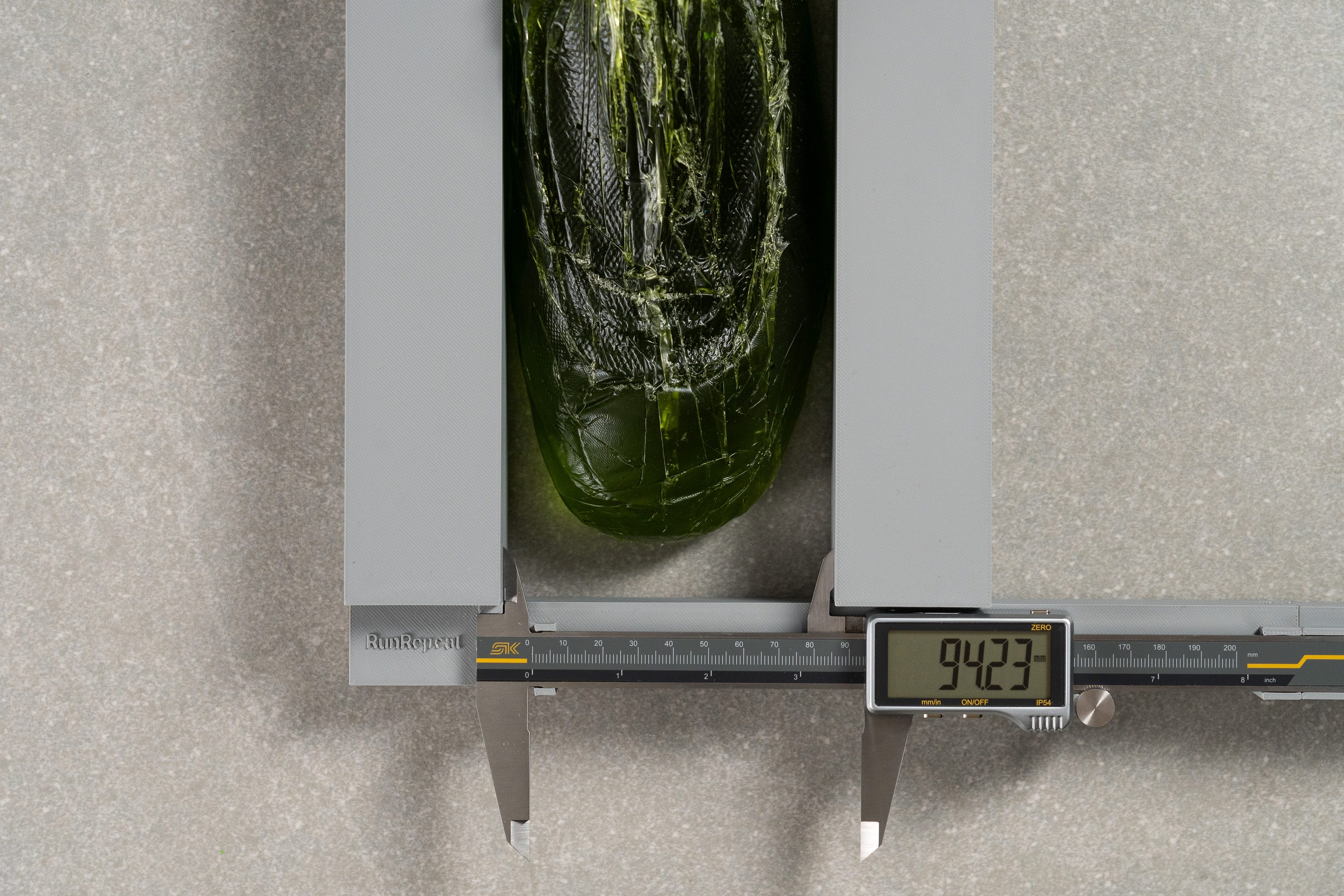
| 740 | 94.2 mm |
| Average | 92.5 mm |
Toebox width
The slightly rounded toebox shape of this kick gives it an edge over many other pointy trainers.
Showing 71.5 mm in its big toe area, we found it less discriminating against the big toe and the pinkie.
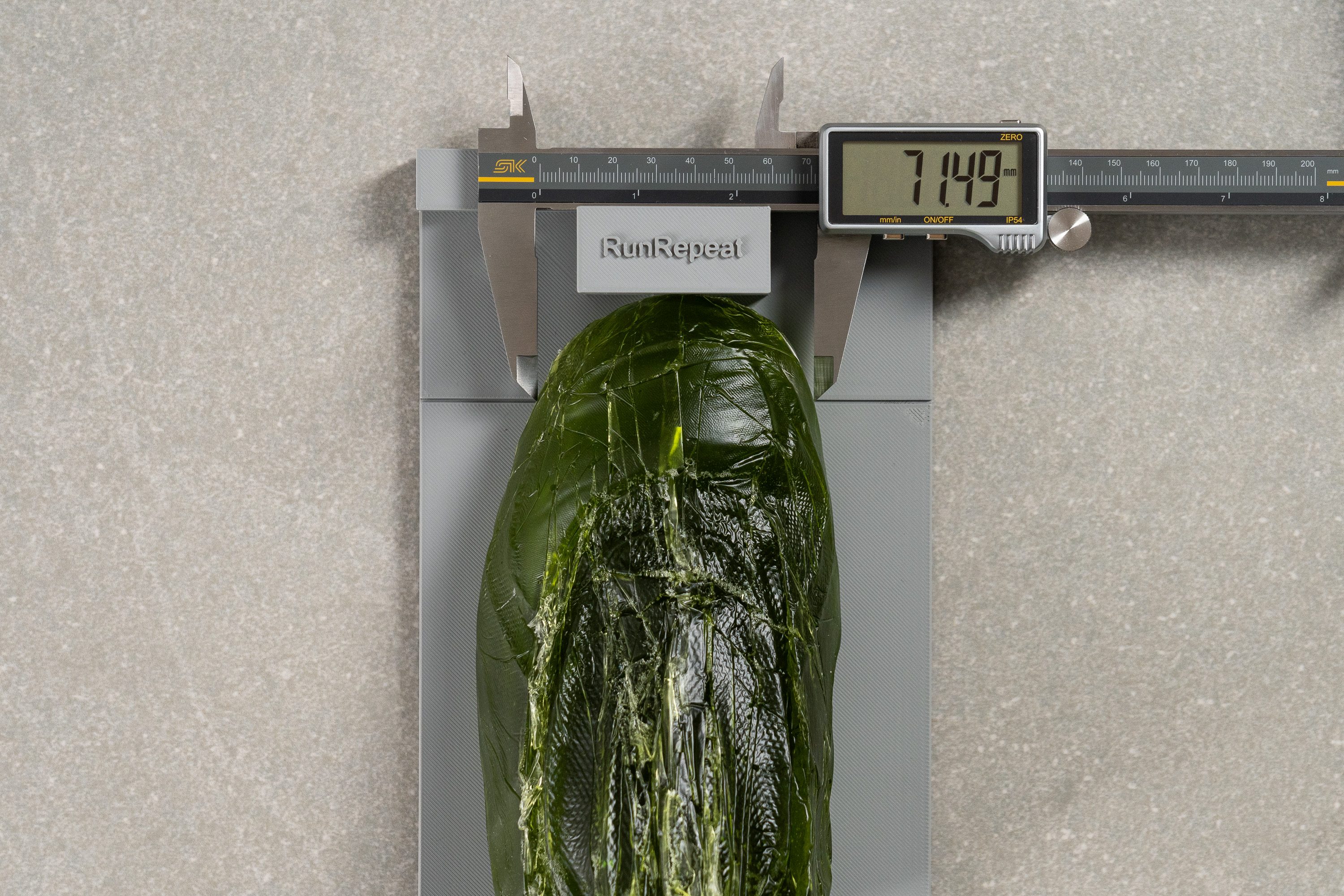
| 740 | 71.5 mm |
| Average | 68.9 mm |
Toebox height
But what makes the NB 740 feel truly spacious is its very generous toebox height of 31.0 mm.
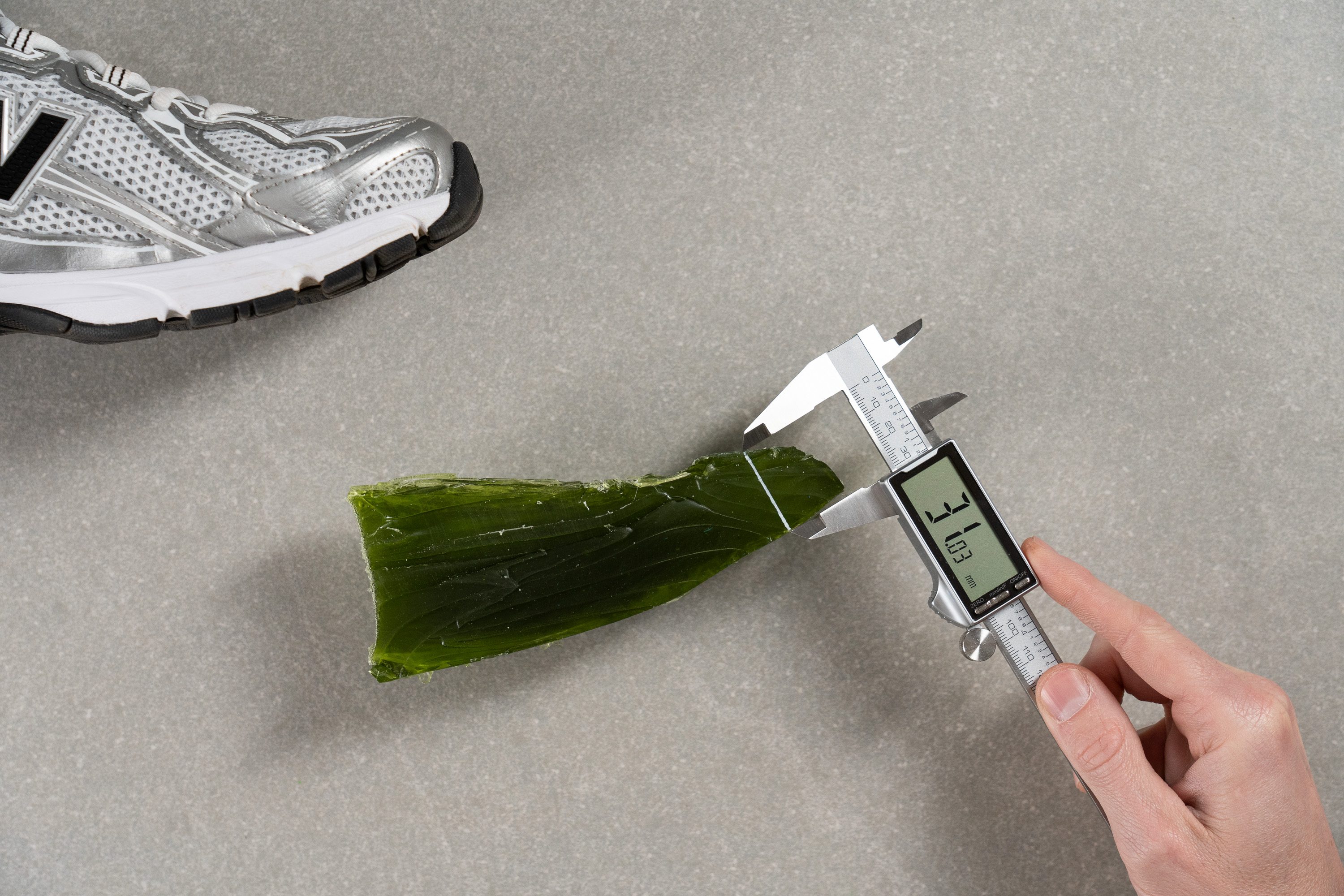
A few solid milimeters higher than average, it offerrs plenty of wiggle room for the toes.
| 740 | 31.0 mm |
| Average | 27.8 mm |
Traction / Grip
Traction test
We found that the NB 740's black rubber outsole lends a nice and surefooted experience on concrete, granite, and stone, among other urban surfaces.
Testing its gripping capacity in the heel, our machine recorded a good friction score of 0.42. In real life, that means you can rely on this New Balance kick's great bite on dry surfaces and a good one in wet and slightly slippery conditions.
| 740 | 0.42 |
| Average | 0.43 |
Outsole design
The bottom of the 740 is generously lined with black rubber for grip and protection. However, it is separated into pods in the forefoot which leaves some room for pliability.
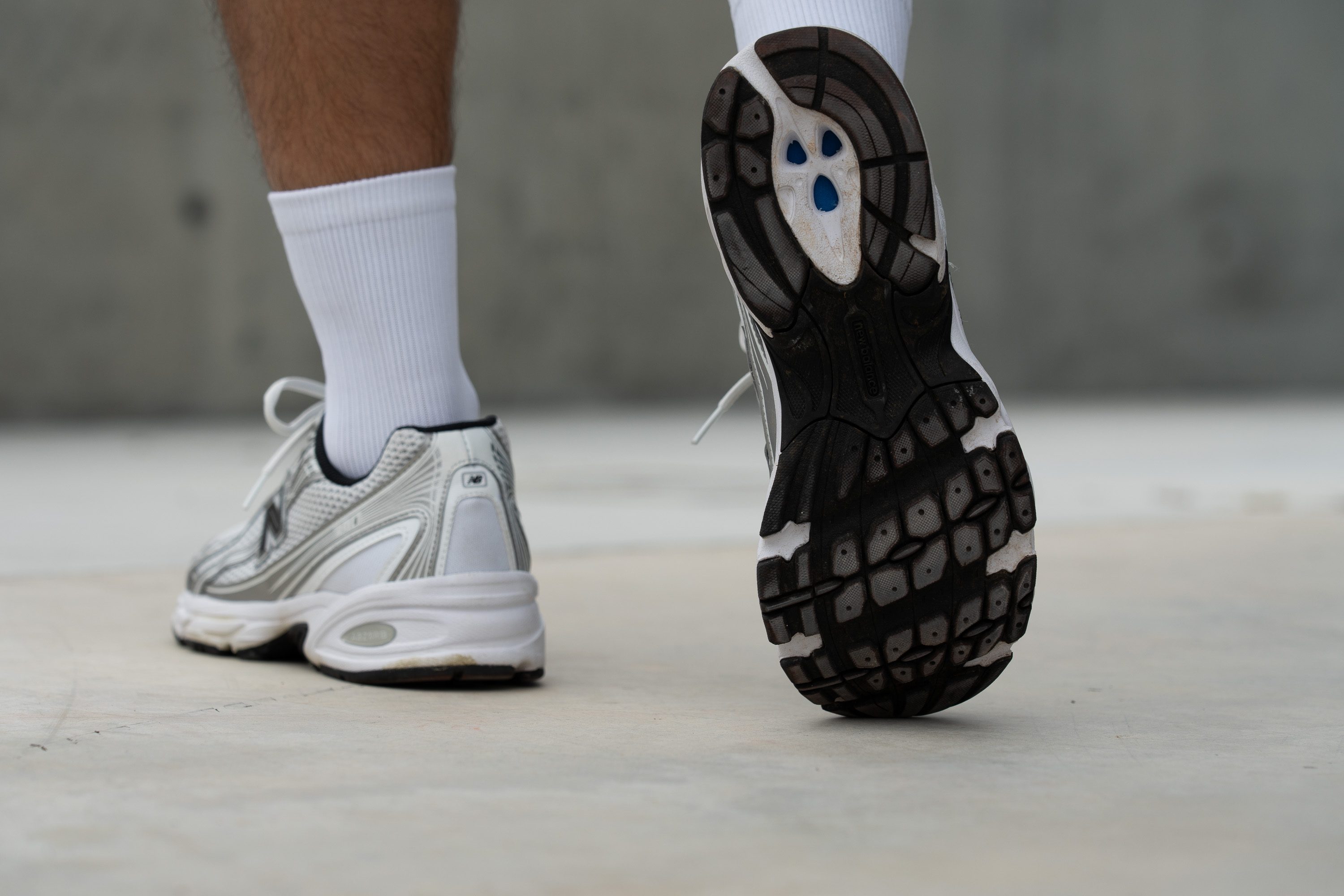
Flexibility / Stiffness
With no rigid components to hinder its pliability, the New Balance 740 proved to be a pretty flexible shoe that bends easily wit the foot.
Using a specialised flexibility tester, we measured that it takes as little as 8.7N of force to bend the kick by 30 degrees. For context, this is just as much as it takes to bend the Adidas Gazelle!
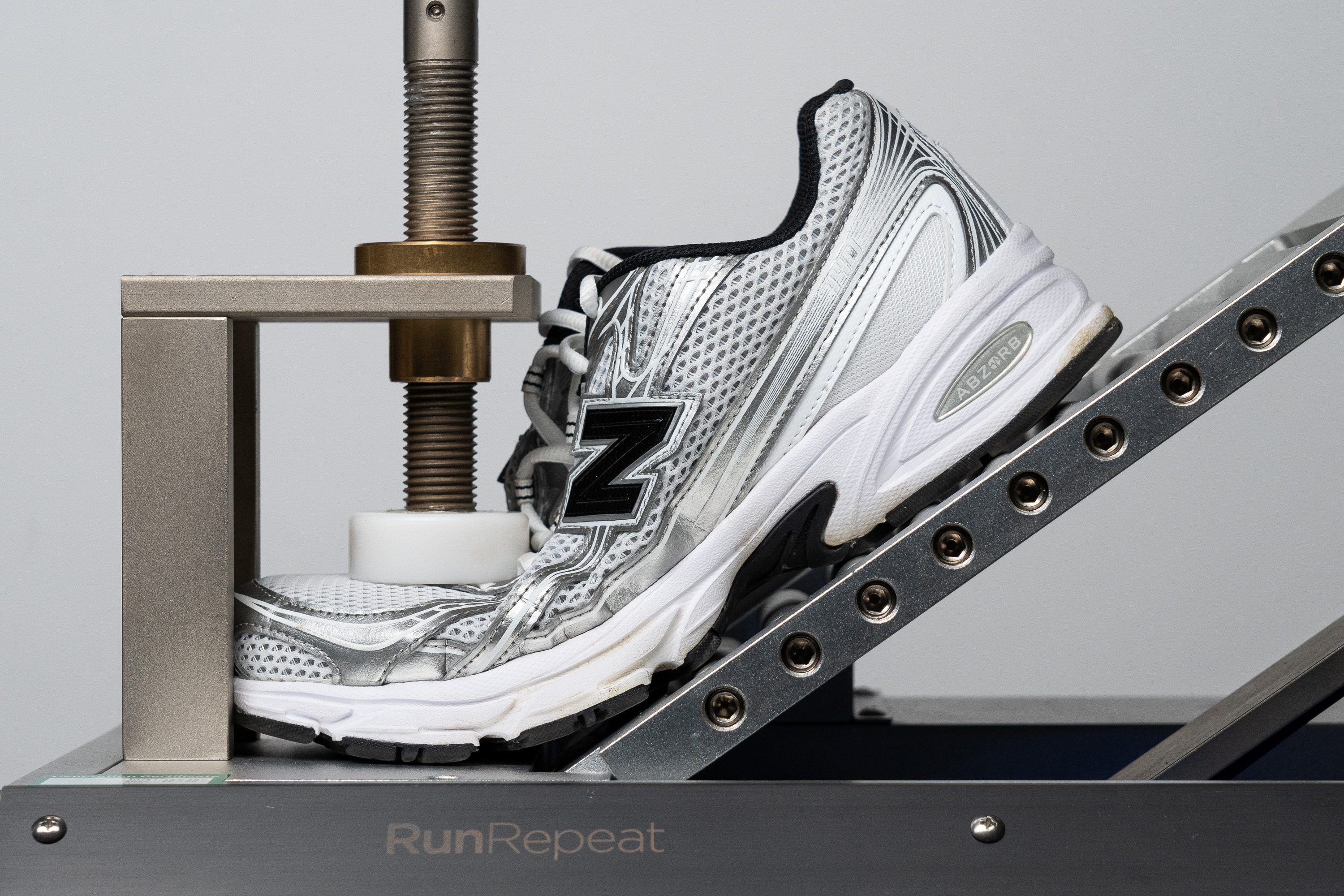
| 740 | 8.7N |
| Average | 13.3N |
Weight
Given its burly appearance, we were pleasantly surprised by the virtual lightness of the New Balance 740.
Tipping the scale at 11.25 oz (319g), it is notably lighter than the category average and never felt as if it was dragging the foot down. Its weight also turned out to be on par with similar retro silhouettes from Nike - the V2K Run and the Vomero 5.
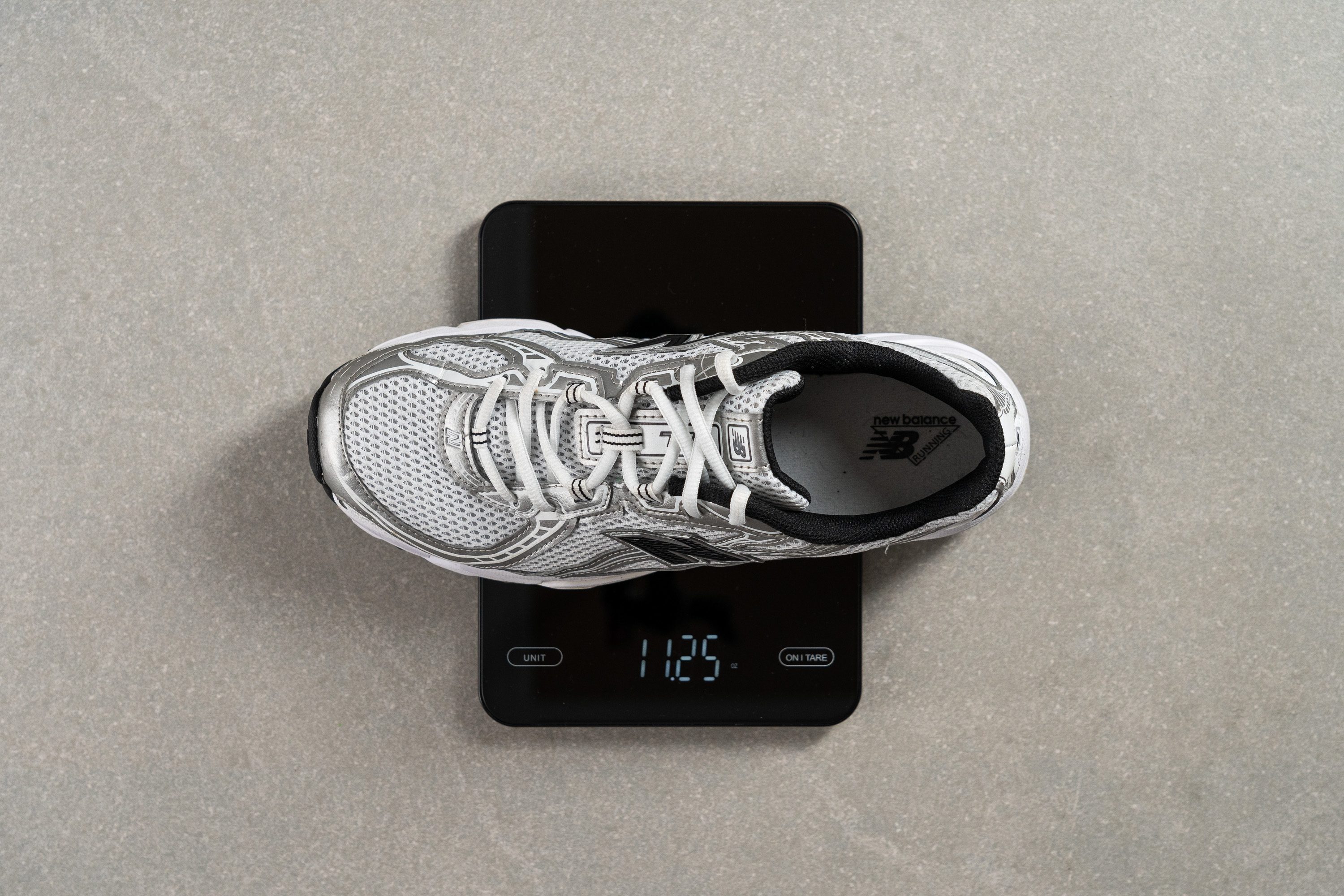
| 740 | 11.3 oz (319g) |
| Average | 13.8 oz (390g) |
Breathability
An open cell mesh is one of the NB 740's most distinct features and, visually, it screams breathability.
That's why we were utterly surprised to see very thin billows of smoke in our breathability test. Those large mesh pores failed to provide as much ventilation as we had hoped!
Searching for answers, we inspected the shoe's fabric up close through a microscope. The latter showed an underlying mesh layer which apparently blocked some of the airflow even though it looked transparent in our light test above.
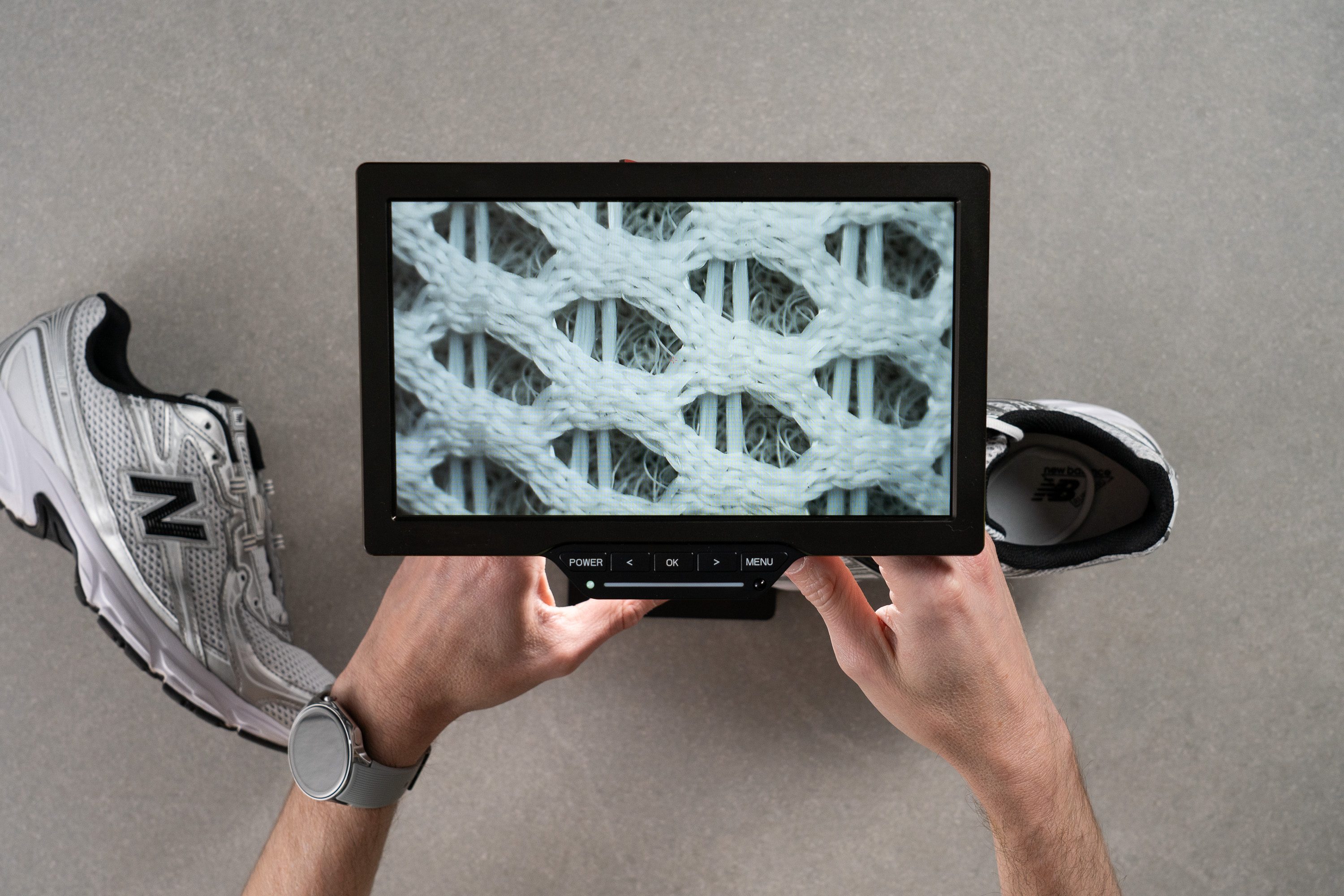
All things considered, we rated this shoe's breathability with a pretty moderate score of 3/5.
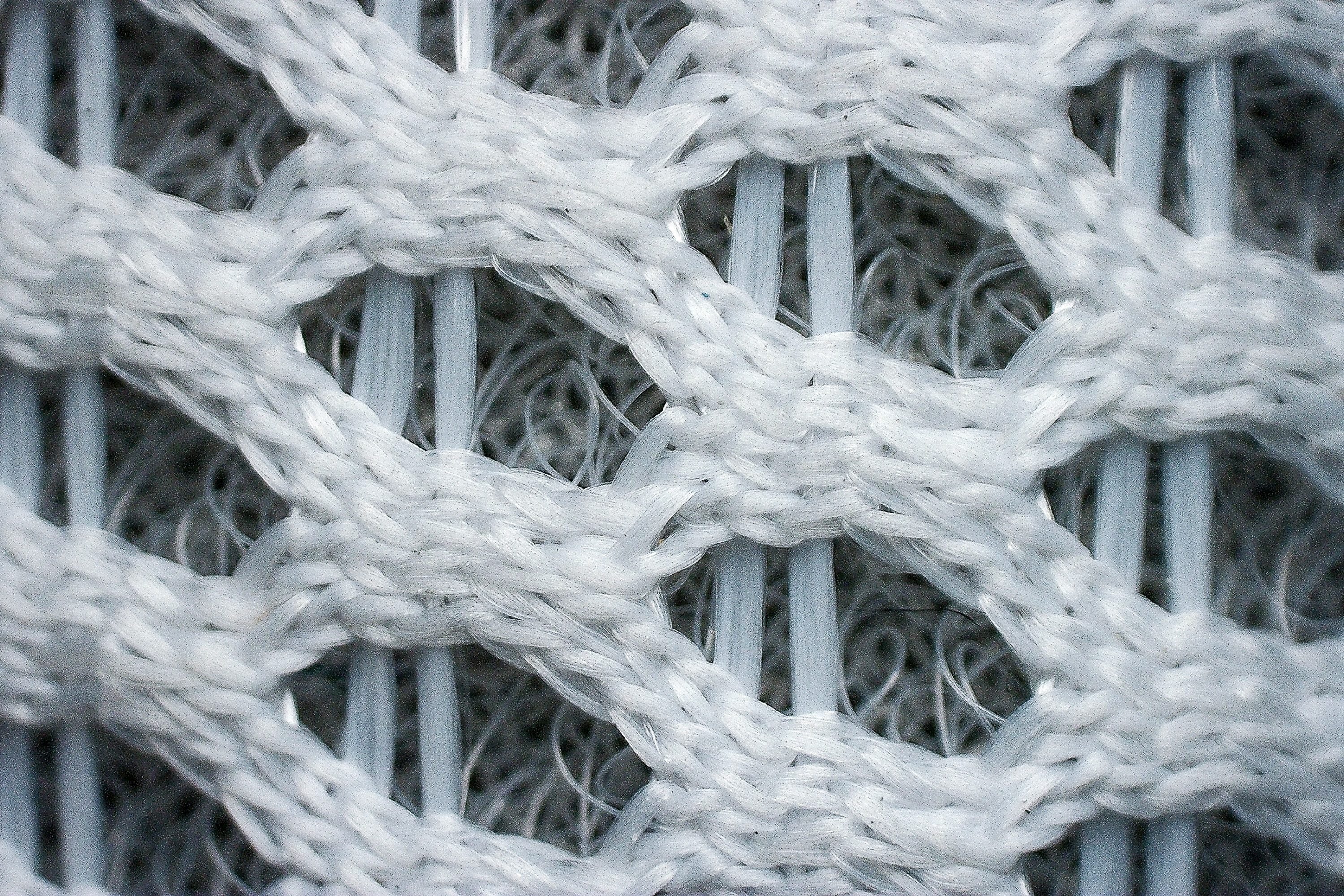
| 740 | 3 |
| Average | 3 |
Stability
Lateral stability test
Our lab testing showed that the New Balance 740 has a decent amount of lateral stability for a casual sneaker.
Even though it shas no special stability components to minimise foot and ankle rolling, the shoe's overall deign has some inherent stability to it. This is primarily due to its wide and firm platform.
Torsional rigidity
The absence of arch supporting mechanisms is clearly reflected in the shoe's torsional flexibility.
Showing very little resistance in our manual tesisting test, it scored only 3/5 on our 1-5 stiffness scale. It's not like the 740 has no structure but it is best suited for people with normal pronation or very mild overpronation (inward rolling of the foot).
| 740 | 3 |
| Average | 3.6 |
Heel counter stiffness
The shoe's heel counter also proved to be rather basic, with very little stiffness or structure to it. Easily yielding to our push-and-squeeze test, it earned as little as 2/5 for the heel counter stiffness.
And the fact that its collar has very thin padding doesn't help with the heel and ankle security either.
| 740 | 2 |
| Average | 3.2 |
Midsole width - forefoot
On the other hand, the wide base of this New Balance kick won't let your feet roll all over the place either.
Measuring its width in the broadest part of the forefoot returned an above average reading of 113.1 mm. Those extra few milimeters form sufficient sole flanges to keep the foot steady enough.
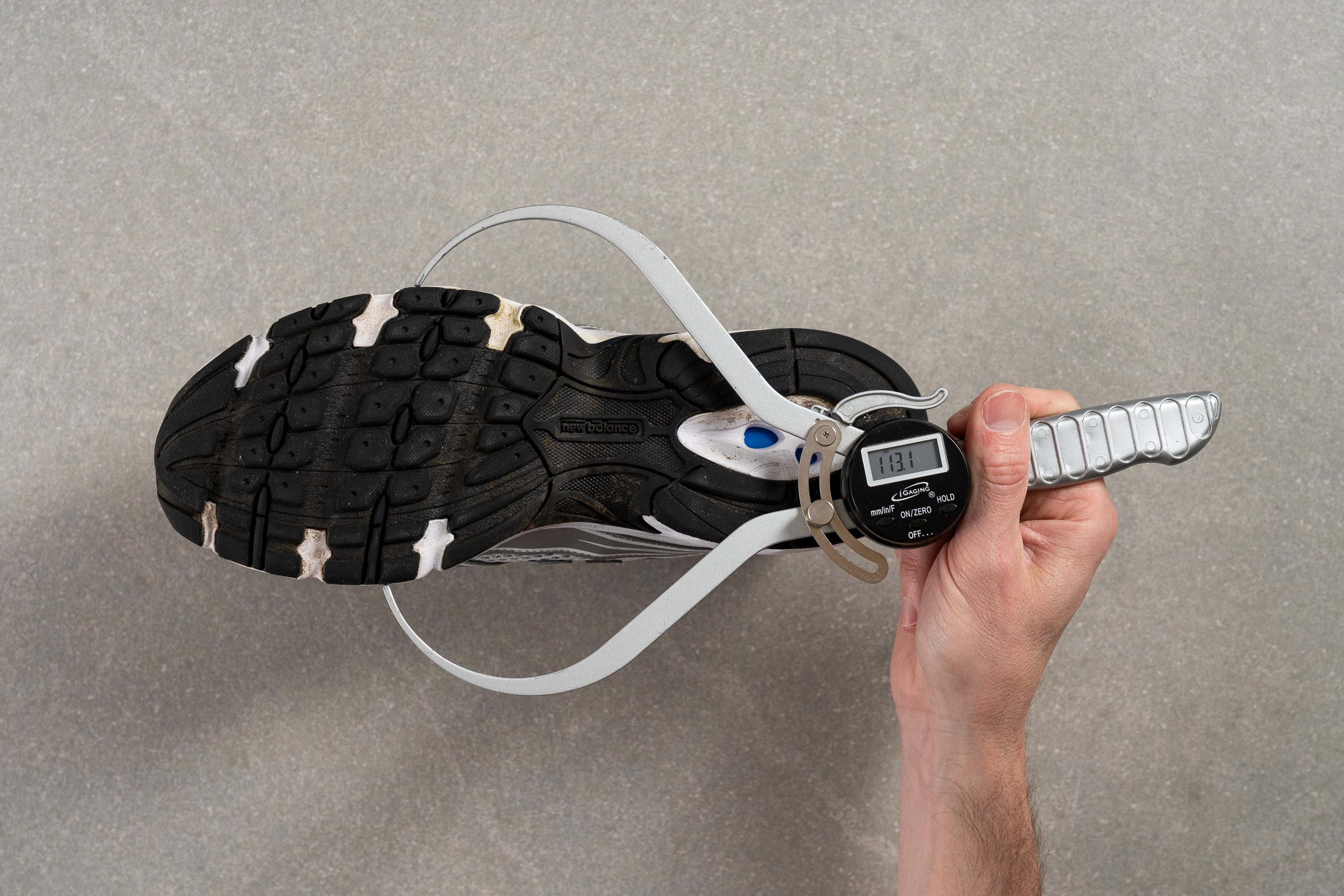
| 740 | 113.1 mm |
| Average | 108.9 mm |
Midsole width - heel
The heel of the 740 also showed a slightly wider-than-average reading of 86.4 mm. While this contributed to the shoe's overall stability, it is still a far cry from being bulky.
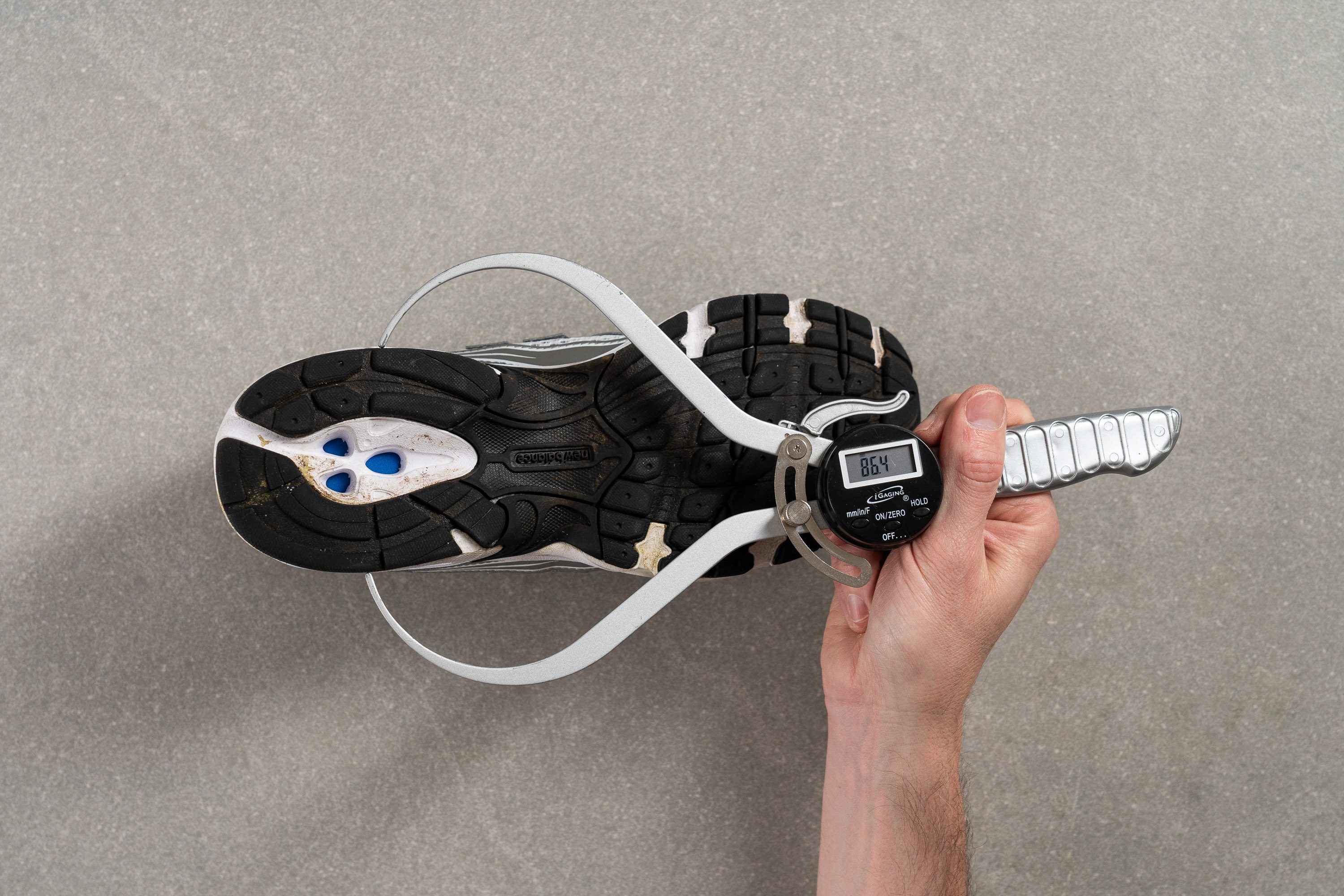
| 740 | 86.4 mm |
| Average | 84.0 mm |
Durability
Leather/Suede quality
New Balance's product description clearly states that the shoe's upper overlays are synthetic and are not made of real leather. So the fact that they melted in our fire test was not a surprise at all.
| 740 | Fake leather |
Toebox durability
We expected the shoe's mesh to be thin and airy but it struck us as abrasion-resistant instead!
Having exposed the fabric to sandpaper for 12 seconds, it hardly showed any damage at all! And because the Dremel didn't affect the shoe's upper integrity, the NB 740 earned the highest toebox durability score - 5/5!
| 740 | 5 |
| Average | 3.7 |
Heel padding durability
The shoe's interior mesh also proved to be exceptionally wear-resistant and refused to give in to the drill. It is only because of a cosmetic scuff that we lowered the shoe's heel padding durability score to 4/5.
| 740 | 4 |
| Average | 3.2 |
Outsole hardness
New Balance went for a standard (no-name) rubber compound for the 740 as it's a more affordable sneaker option after all.
Nevertheless, the blend showed a fairly high durometer reading of 82.4 HC which confirmed its hardness.
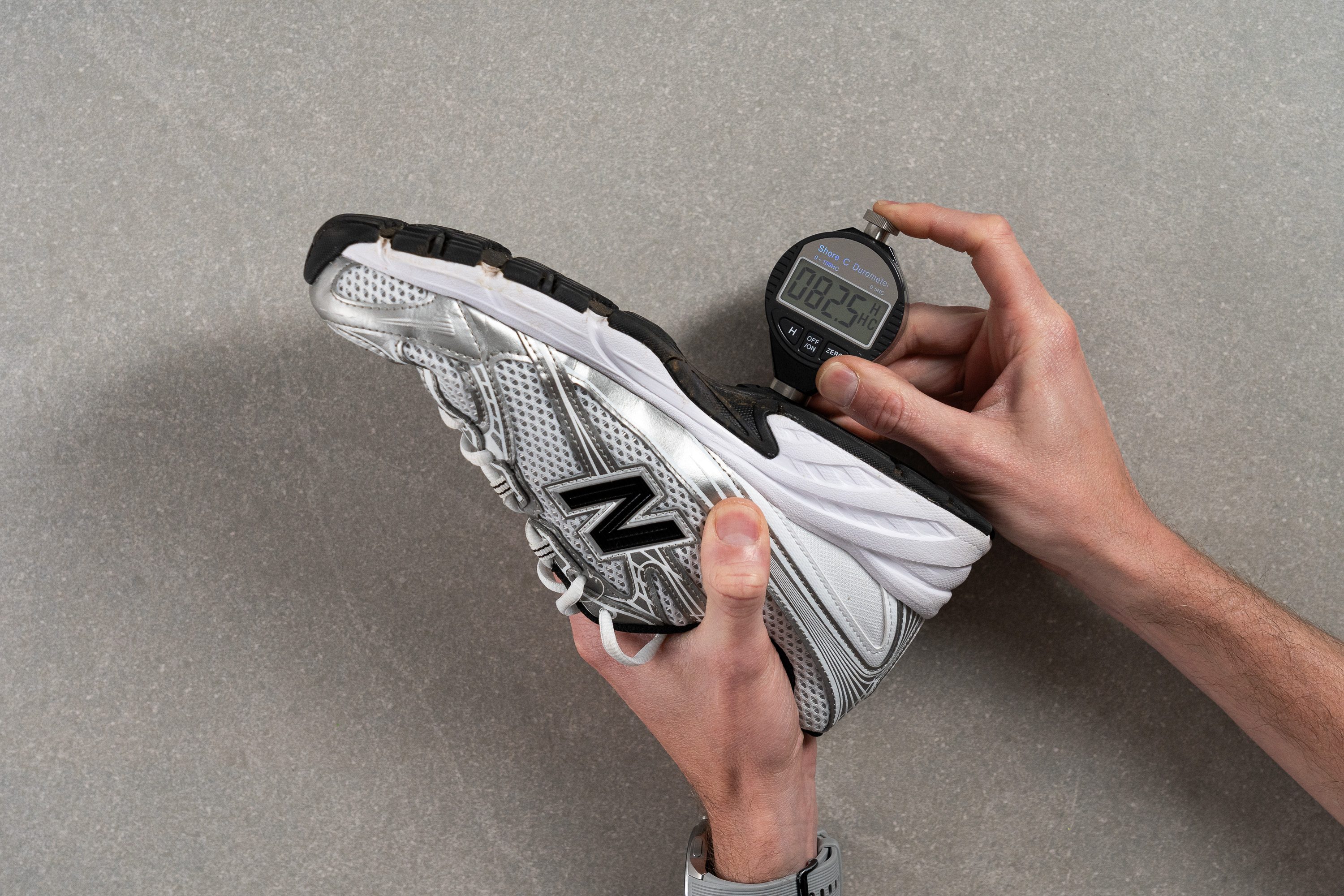
| 740 | 82.4 HC |
| Average | 85.7 HC |
Outsole durability
To put it through the wringer, we exposed the shoe's rubber outsole to sandpaper for 18 seconds at a very high Dremel speed of 10K RPM.
With a moderate dent of 1.0 mm, the rubber stood up to the challenge just as readily as most oother sneaker outsoles.
| 740 | 1.0 mm |
| Average | 1.1 mm |
Outsole thickness
We also took note of the shoe's outsole thickness which proved to be on par with the average at 4.8 mm. This, and the kick's exceptionally strong mesh upper, are very promising signs of longevity.
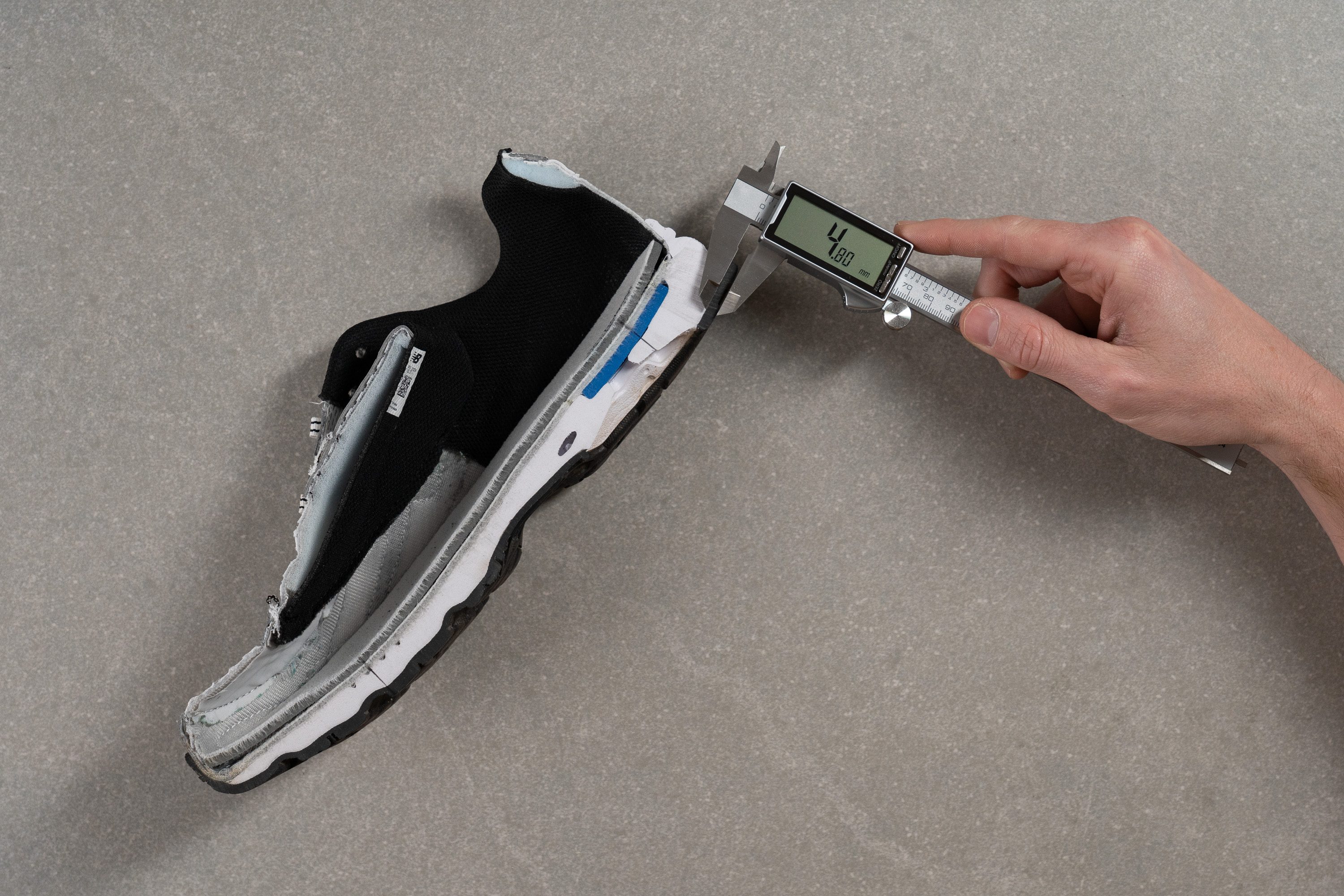
| 740 | 4.8 mm |
| Average | 5.3 mm |
Misc
Insole thickness
The shoe's insole is not particularly padded either with just a moderate thickness of 3.7 mm. It adds a touch of comfort but nothing to write home about.

| 740 | 3.7 mm |
| Average | 5.1 mm |
Removable insole
You can compensate for some of the shoe's missing padding or arch support by swapping its stock insole wit a custom orthotic. Gladly, there is enough in-shoe space to accommodate the change as well.
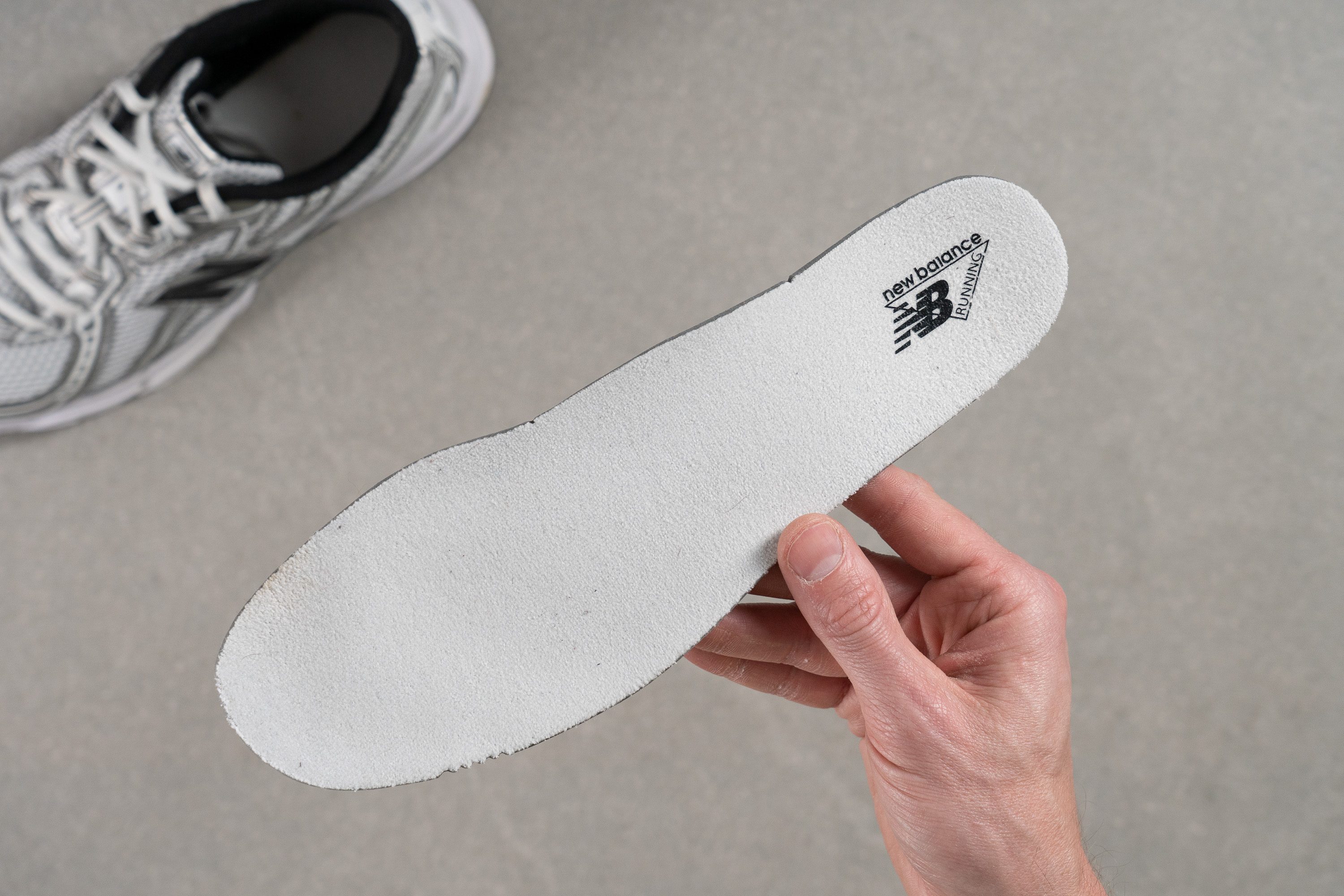
| 740 | Yes |
Reflective elements
You might think that those shiny silver overlays reflect light in the dark but, in fact, they don't.
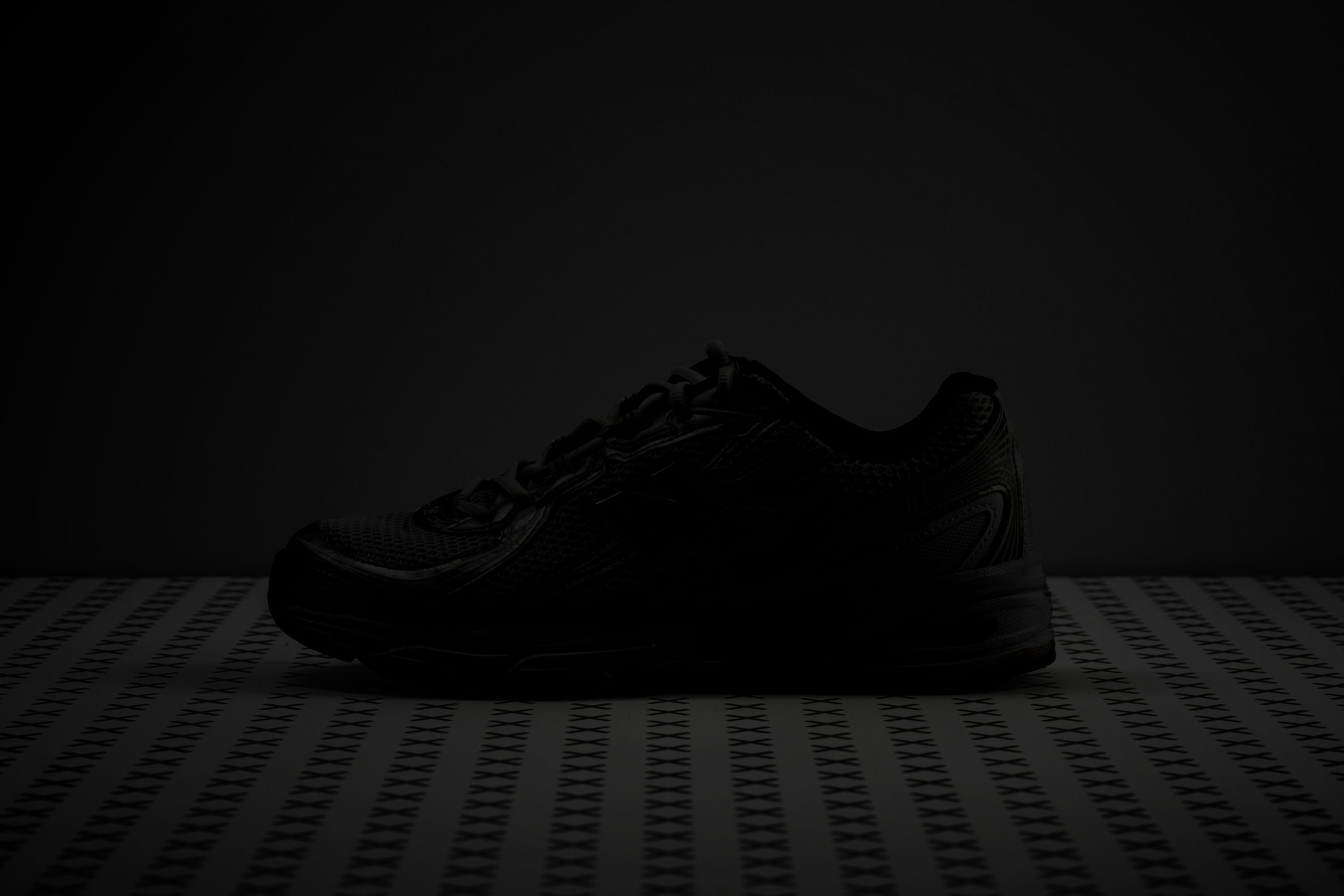
| 740 | No |
Tongue padding
Despite its minimally padded interiors, the tongue of the 740 actually turned out to have a decent amount of foam. Measuring its thickness with a calliper showed 7.7 mm which is enough to keep lace bites and pressure at bay.
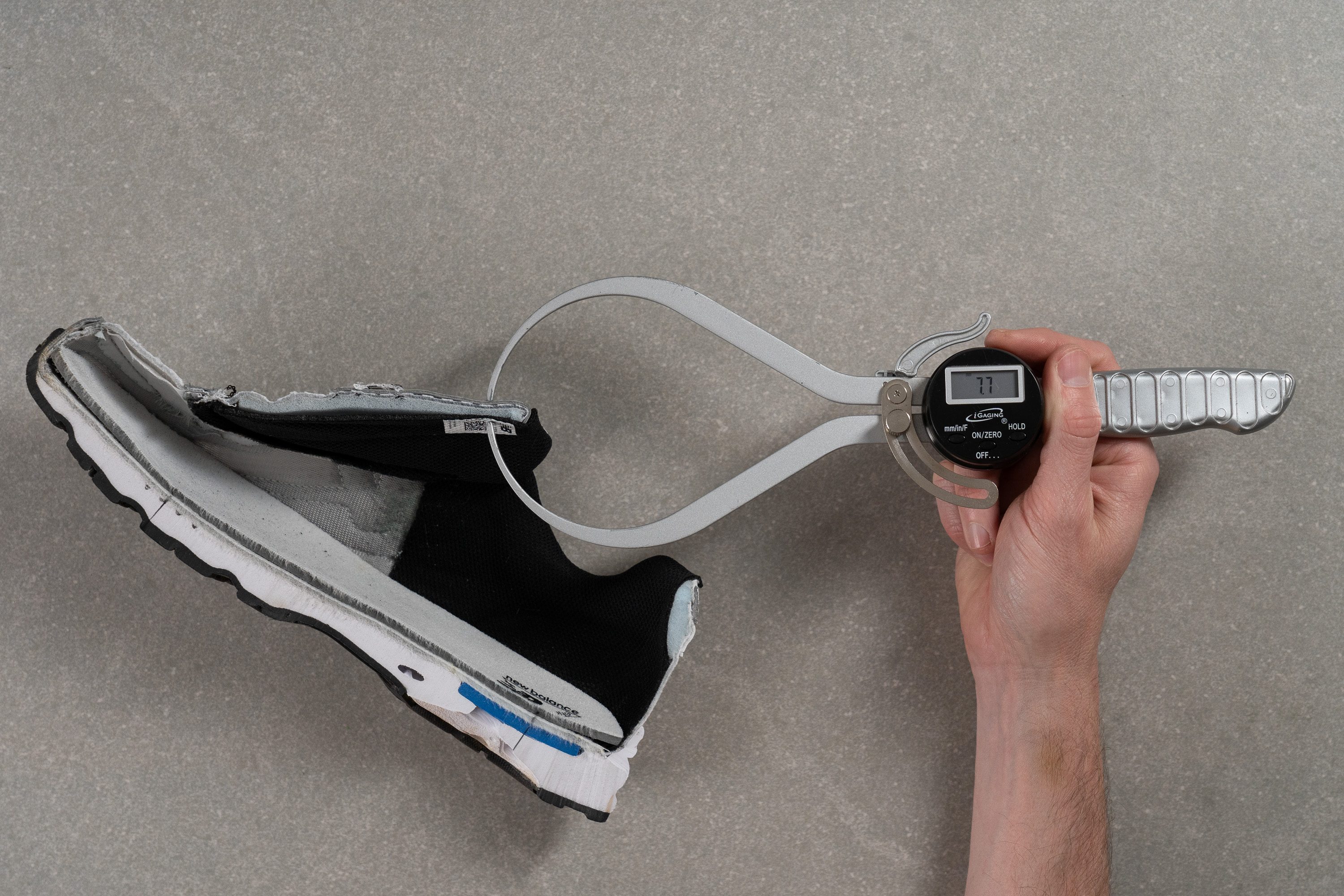
| 740 | 7.7 mm |
| Average | 9.6 mm |
Tongue: gusset type
The shoe's tongue has no gussets on the sides and it's a pretty long one too. This can result in some tongue shifting expecially if the shoe is worn all day long.

| 740 | None |
Price
The New Balance 740 experienced a major popularity boost and we believe that its price is part of the reason. The shoe is offered at a lower MSRP than its similarly looking counterparts from NB and retro running shoes from other brands like ASICS and Nike.
While it doesn't pack any noteworthy technologies or special features, it ticks all the right boxes of a reliable day-to-day casual sneaker. And it has a promising durability.
Great value for money indeed!
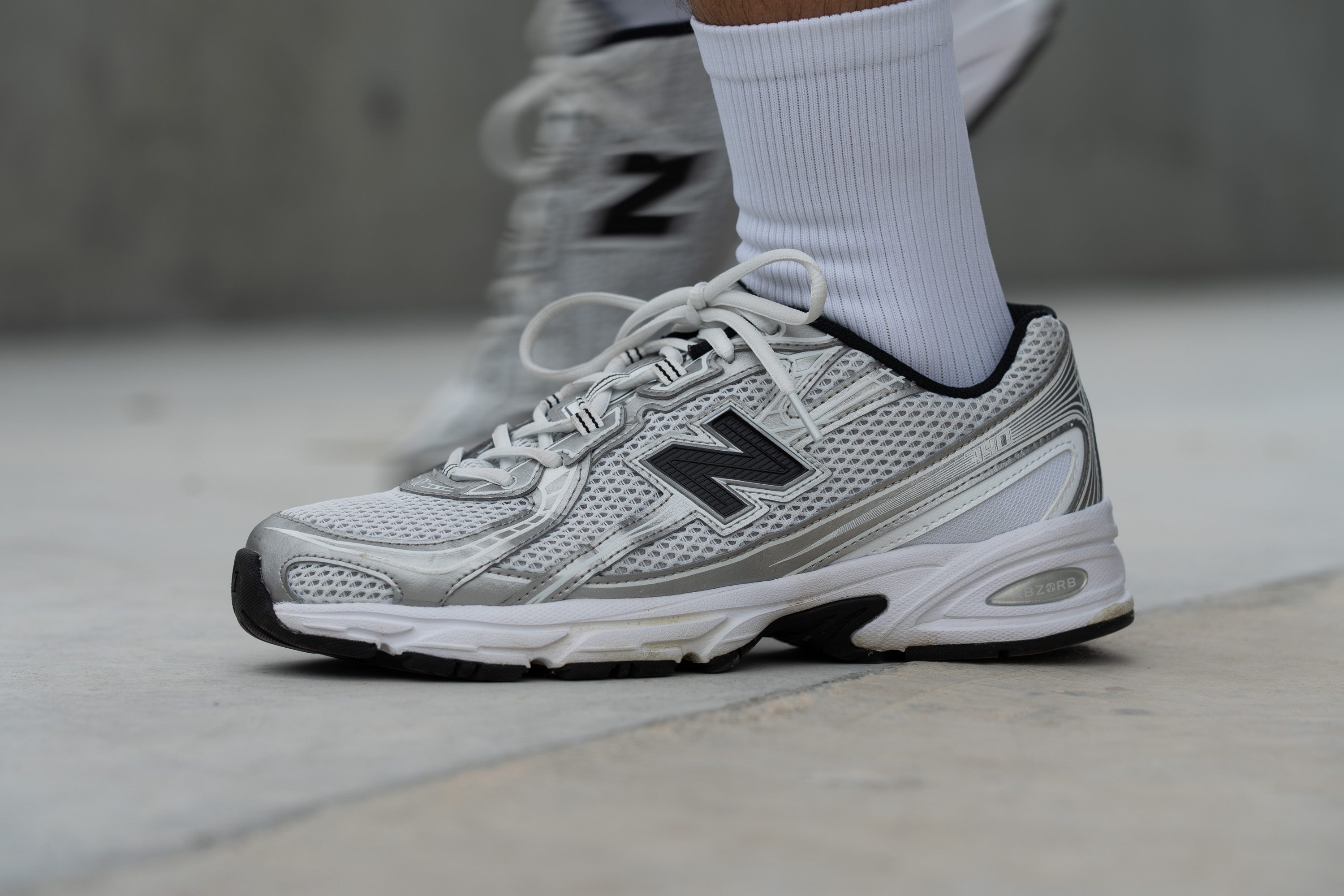
| 740 | $110 |
Heel tab
A large shoe mouth makes the on-and-off pretty easy in this New Balance kick even though the pull tab is abscent.
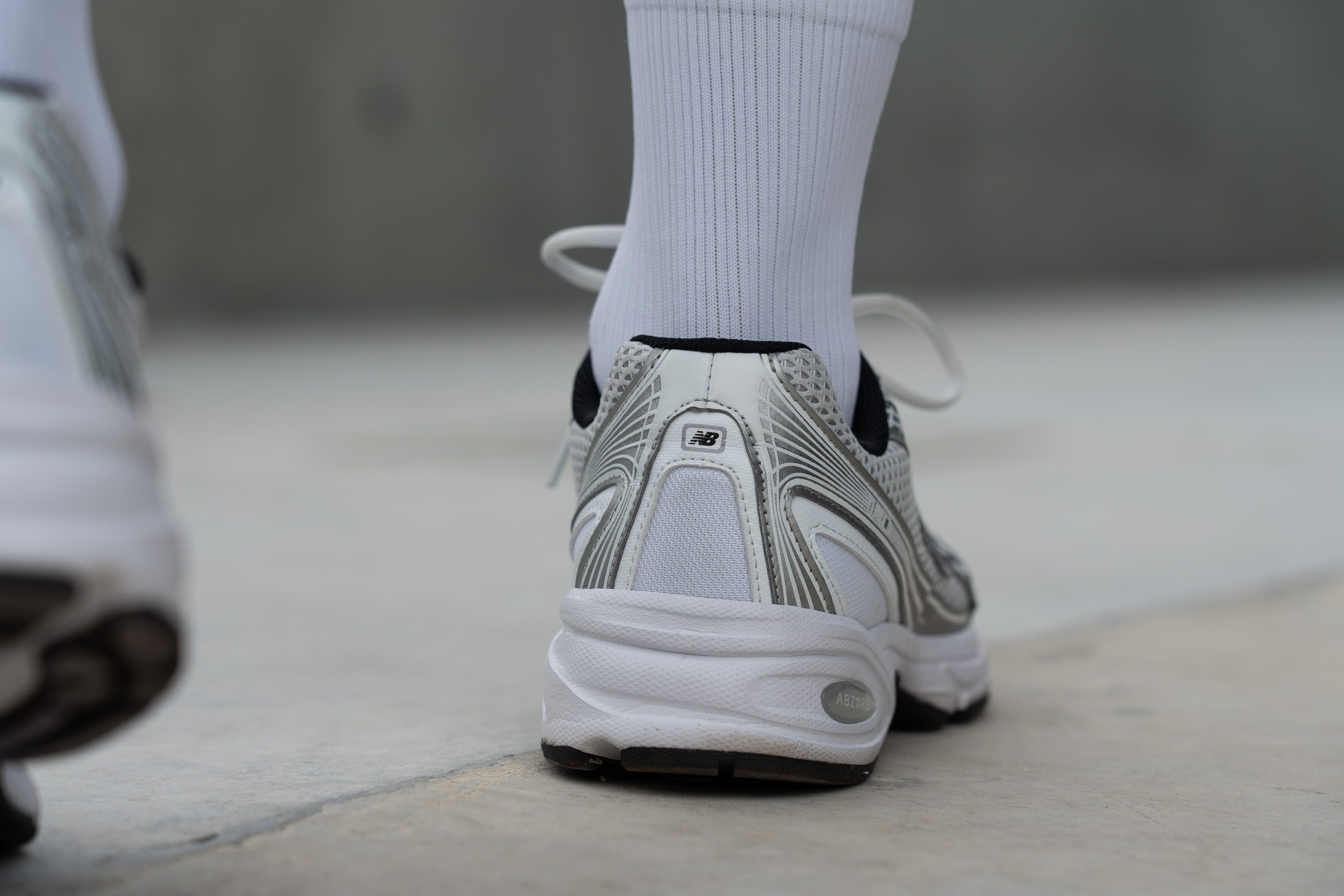
| 740 | None |

